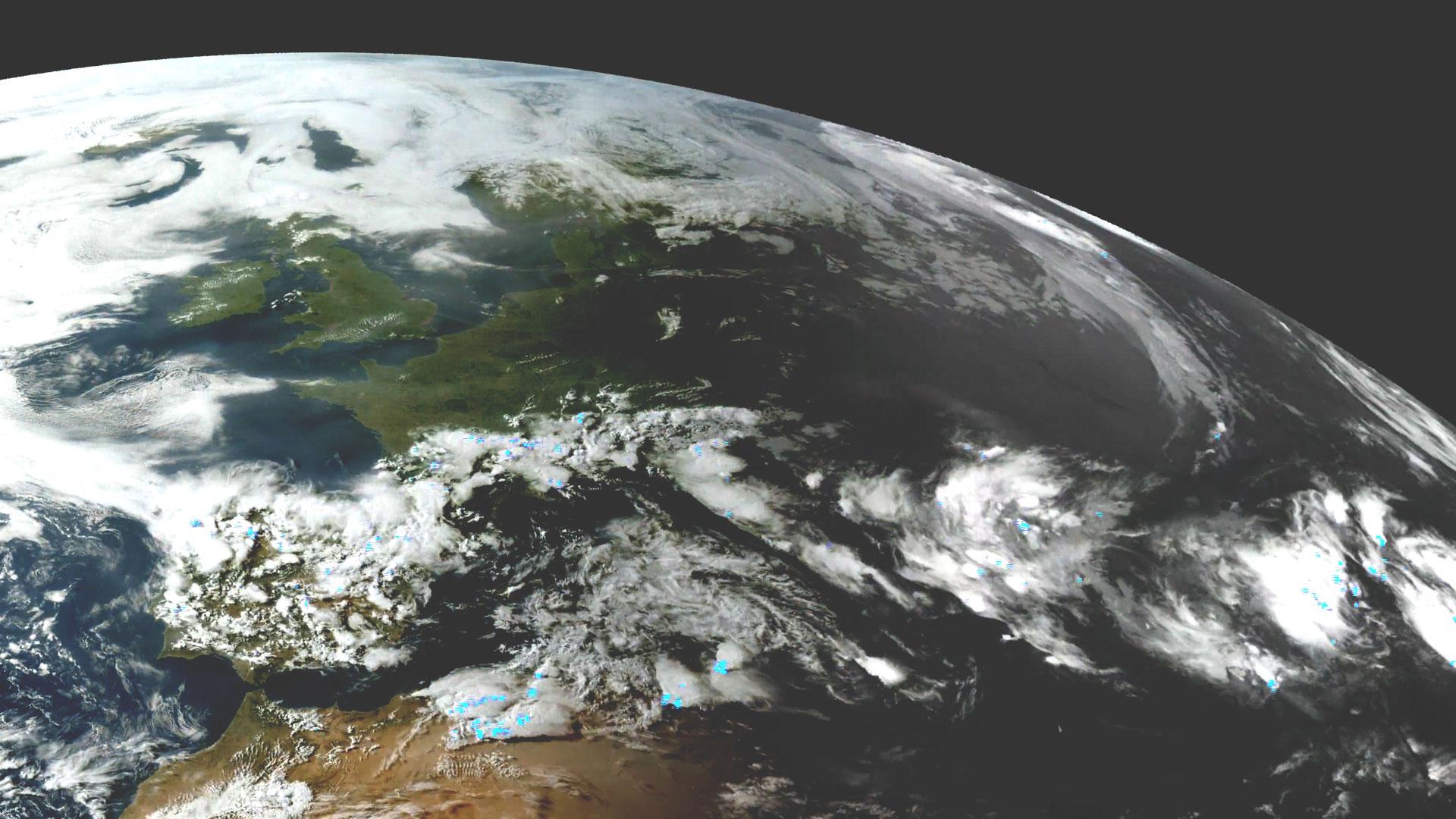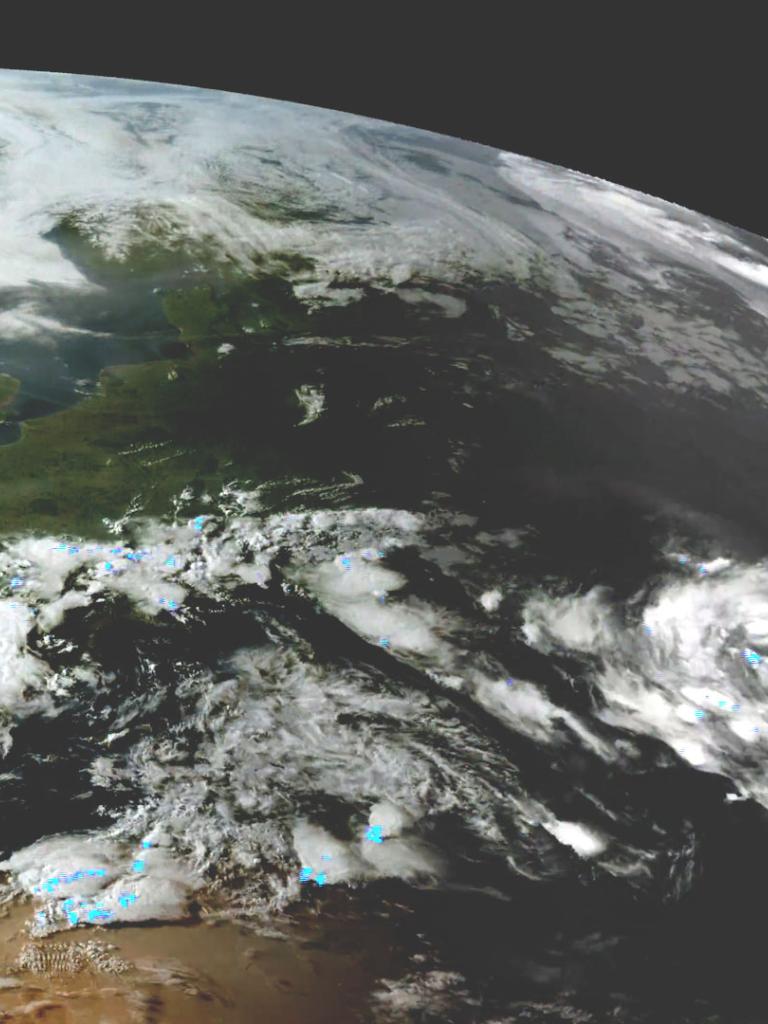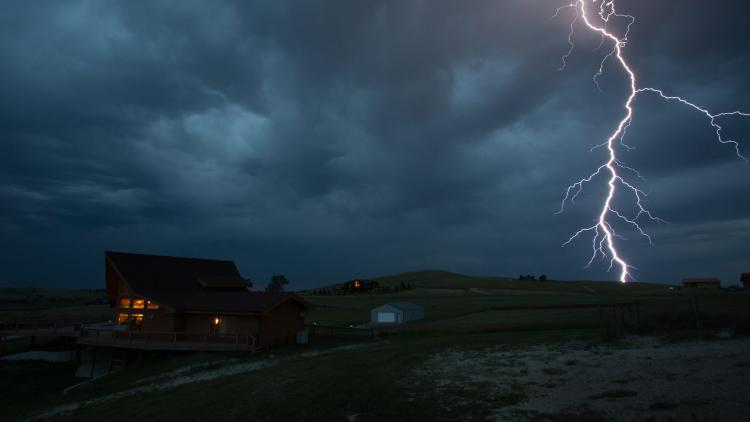From its lofty vantage point, Meteosat-12 is now the main source of near-real-time geostationary satellite data for Europe, Africa and the surrounding oceans. Data from its instruments are distributed to national meteorological services in EUMETSAT member states and beyond, with improved detail and timeliness – as well as new observations such as lightning data – giving weather forecasters additional confidence in their predictions.
Phil Evans, Director-General of EUMETSAT, said: “Meteosat-12 now takes responsibility for delivering Europe’s prime geostationary satellite service, ensuring continuity and delivering enhanced capabilities at a time when severe weather events are becoming more frequent due to the climate crisis.
“The MTG system marks a new era in weather forecasting, providing data that support everything from improving severe weather warnings and enhancing transport safety to wildfire response and air quality hazard assessments. Once the full MTG constellation is operational, it will, for the first time, allow us to observe the entire lifecycle of a convective storm – from the earliest signs before clouds begin to form to the detection of lightning strikes. These data are help forecasters, emergency services, and civil authorities respond more rapidly and effectively to protect lives, property, and infrastructure.”
Launched on 13 December 2022, Meteosat-12 scans the full Earth disc every 10 minutes, delivering data more frequently and in sharper detail than its predecessor. It carries two main instruments: the Flexible Combined Imager (FCI) and Lightning Imager (LI). The FCI delivers imaging data in twice as many spectral channels than its predecessor and with an improved spatial resolution, providing more detailed views of fast-changing weather such as storms, fog, and rapidly forming clouds. The satellite also carries the LI, Europe’s first space-based instrument to detect lightning across Europe and Africa, day and night, helping forecasters assess storm development, intensity, and risk.
The MTG programme will run into the 2040s and includes six satellites: four imagers and two sounders. The first MTG sounder, MTG-S1, will launch in summer 2025 and provide vertical profiles of temperature and humidity from geostationary orbit – another first for Europe. Combined with data from MTG imagers and next-generation Metop satellites, it will enhance short-range forecasting by enabling specialists to track storms throughout their entire lifecycle and supplying data to further enhance weather models.
As EUMETSAT deploys the MTG satellites, those of the Meteosat Second Generation will continue to play an important role in EUMETSAT’s constellation for years to come. Meteosat-10 will now assume a supporting role, continuing imaging services as a ready backup for Meteosat-12. Meteosat-11 delivers rapid scans every five minutes over Europe and North Africa and can also support the prime service if needed. Meteosat-9 remains positioned over the Indian Ocean, providing vital data to regions vulnerable to cyclones and monsoons.
Gareth Williams, Head of Flight Operations at EUMETSAT, said: “Meteosat-12 now provides the prime service within a coordinated constellation of satellites that ensures continuity, reliability and resilience, while introducing important new capabilities. Seeing the spacecraft take responsibility for Europe’s prime geostationary service is a major operational achievement, reflecting years of dedicated work across EUMETSAT, our member states and partners. With more MTG satellites to come, we look forward to an even greater impact from the constellation in delivering vital data for forecasting, climate monitoring and other essential services and applications.”

About EUMETSAT
EUMETSAT, Europe’s meteorological satellite agency, monitors the weather and climate from space. Based in Darmstadt, Germany, EUMETSAT provides its 30 member states with meteorological imagery and data that are essential for keeping their communities safe and for the benefit of critical sectors of their economies.
EUMETSAT’s 30 member states are: Austria, Belgium, Bulgaria, Croatia, Czech Republic, Denmark, Estonia, Finland, France, Germany, Greece, Hungary, Iceland, Ireland, Italy, Latvia, Lithuania, Luxembourg, the Netherlands, Norway, Poland, Portugal, Romania, Slovakia, Slovenia, Spain, Sweden, Switzerland, Türkiye and the United Kingdom.






